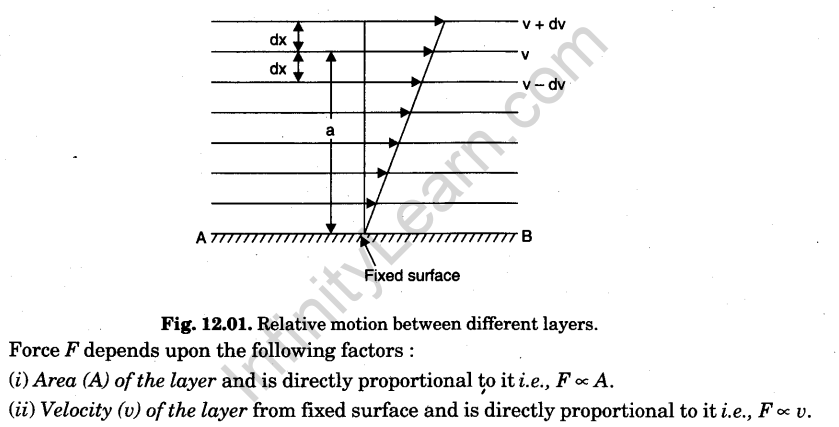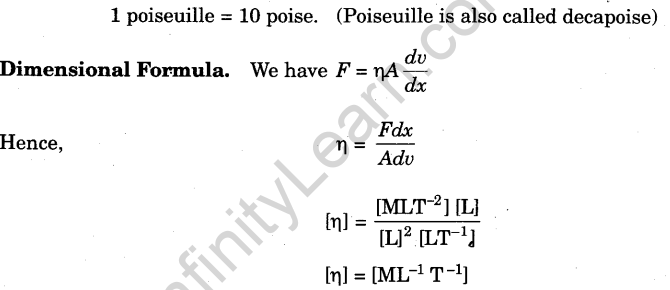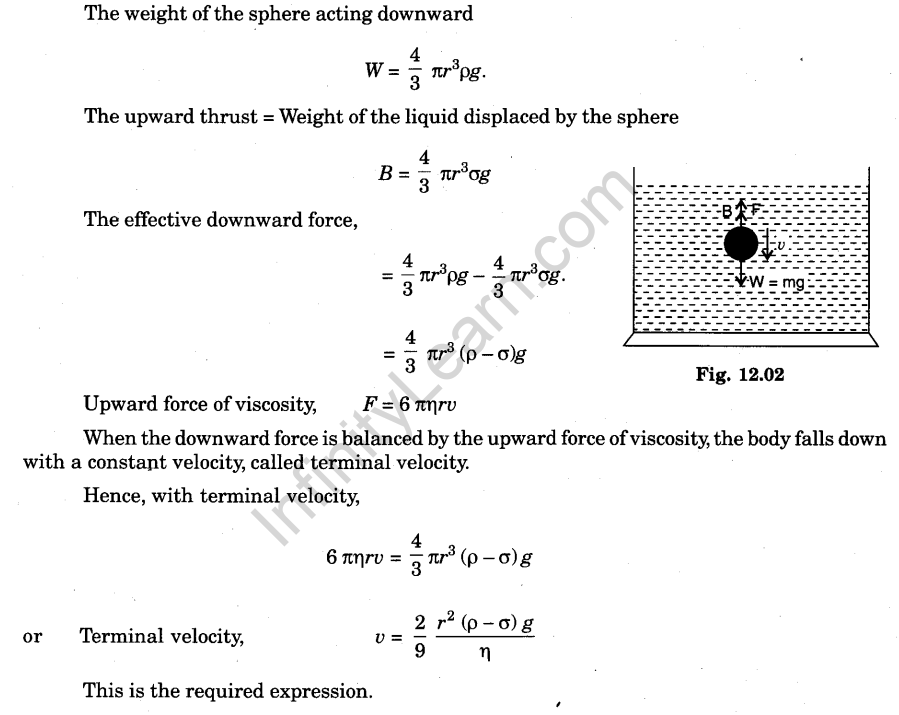Definition – Viscosity
It is the property of a fluid by virtue of which an internal resistance comes into play when the fluid is in motion, and opposes the relative motion between its different layers.
Demonstration. Take some water in a glass tumbler and stir it with a spoon for a minute. Take out the spoon from water and leave the water free. After few minutes, it will come to stop due to internal friction acting between the layers of water.
When liquid flows over a flat surface, liquid layer in contact with fixed surface AB does not move. Upper and upper layers move forward with increasing velocity. Due to relative motion, a backward dragging force F acts tangentially to every layer.

Hence, coefficient of viscosity may be defined as (or is equal to) the tangential force required to maintain a unit velocity gradient between two layers each of unit area.
Unit, (i) The C.G.S. unit of coefficient of viscosity is poise (P).
One poise is coefficient of viscosity of a liquid if a force of 1 dyne is required to maintain a velocity gradient of one cm per sec per cm between two layers, each of area one cm2.
(ii) The S.I. unit of coefficient of viscosity is a poiseuille (PI) or decapoise.
One poiseuille is coefficient of viscosity of a liquid if a force of 1 newton is required to maintain a velocity gradient of one metre per sec per metre between two layers, each of area one m2.

Stoke’s law
It was shown by Stokes that if a small sphere of radius r be moving with a uniform velocity υ (terminal velocity) through an infinite homogeneous and in compressible fluid of coefficient of viscosity η, it experiences a force F given by,
F=6πηrυ.
This relation is known as Stokes’ law.
Terminal velocity
Definition. The maximum velocity acquired by the body, falling freely in a viscous medium, is called terminal velocity.
Expression. Considering a small sphere of radius r of density p falling freely in a viscous medium (liquid) of viscosity q and density a (Fig). The forces acting on it are :



